I moved the last batch of stuff out of The Guild tonight, thus closing the books on Reinventorium 1.0 once and for all.
Johnny and I moved into The Guild in January of 2012, so it’s 6 years and 2 months I’ve been there. Much reinventing was done. There is much more to do.
Thanks to Ghislaine, Wendy, Alanna, Michelle, Lloyd, Sherri, Anne, Gilbert and all the box office staff and fellow tenants that made it such a comfortable place to hang my hat.
What’s next?
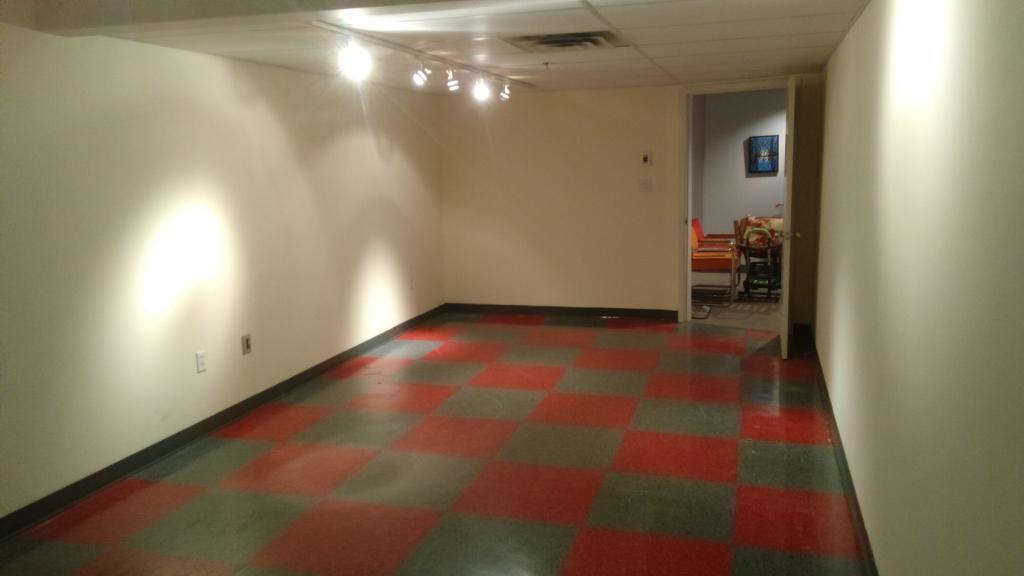
After a valiant effort to move my many drawers of cold type myself yesterday, I called the experts at McQuaid’s back in to do it. As they hefted I could feel the years terraforming back onto my physical health. Just a very few bits and bobs left to move now.

Last night as he was going to bed, Oliver was frustrated that nobody had organized a PEI instance of the March for Our Lives that’s happening around the world today.
I asked Oliver who he thought would organize this, and he replied “the people who organize things.”
To which I replied “the people who organize things is all of us,” not a secret cabal of special people.
Apparently he took my advice to heart, as by the time I woke up this morning he’d organized a March for Our Lives today for 1:00 p.m. at the Coles Building. Posters were printed, a Facebook event created.
Here’s the speech that Oliver wrote to deliver at the march:
I’m Inspired by The Parkland Students, This is Never a Lay Down in Our Society, This will never be. We need to have a Change in Our Societies. We need to have a change in the way that we treat people (First Nations, etc.) because it’s unfair that we have mistreated these people for so long now, so stand up for the French, stand up for the First Nations, stand up for Many Other People, and Now Standup for The Generations that are still alive today.
There are other sufferings of Schools (For Example: First Nations in Residential Schools) and other Societal Sufferings (French were challenged because the English invaded their lands)
There are many other things in our (Canadian) History, that we’ll never forgive our Challenges.
My Generation seems to suffer a lot in the last shooting in Parkland, Florida, My Generation will have fears of this tragic event for years to come, My Generation today are fighting for Freedom for Peace and Hope that this will never ever happen again, My Generation’s Slogan of this Protest is “We Had Enough”, We (Canadians) and They (Americans) need Freedom for Peace and Hope that this will never ever happen again both in Canada and in America for our Children, First Nations, French, and many other people.
I’m very proud of, and inspired by, my son for taking this on; the moment when them becomes us is a powerful one to watch.
We were a small but hearty lot standing in the cold this afternoon, but our spirits ran strong. Here’s Oliver reading his speech.
I’m finally, at long last, in possession of a gateway from The Things Network, and so I’m ready to start laying the groundwork for an open sensor network in Charlottetown.
What does this mean?
Well, imagine you want to measure something: temperature, humidity, noise, pollution, daylight, water level, pedestrians.
You do you the measuring with sensors out in the field, and sensors that are (a) small and (b) don’t use a lot of power, are best because they’re easier to spread around (if you can run a sensor with batteries, then you don’t have to run power to it; if you can tuck a sensor in a corner rather than paying an electrician to mount it somewhere you’re more likely to install it).
Once you have your sensors out in the field you need a way of getting the data they collect to a central data-collecting place. In the olden days this often meant that the sensors had a way of storing readings and you’d get in a truck and visit them occasionally and transfer the data to a laptop.
More recently sensors have been able to send readings using cellular telephone data networks, but that makes the sensors more expensive, and requires that they have SIM cards and a mobile operator through which to pass the data.
Ideally there could be low-cost sensors, communicating using radio over unlicensed spectrum, to a low cost gateway, thus removing the need both for trucks and SIM cards altogether.
And that’s exactly what The Things Network, a Dutch project, has set out to do. Their elevator pitch:
The Things Network is building a network for the Internet of Things by creating abundant data connectivity, so applications and businesses can flourish.
The technology we use is called LoRaWAN and it allows for things to talk to the internet without 3G or WiFi. So no WiFi codes and no mobile subscriptions.
It features low battery usage, long range and low bandwidth. Perfect for the internet of things.
In hardware form, here’s what this looks like right now in my office.
First is The Things Gateway, about the size of an iPad, with an antenna sticking out the top. Depending on the terrain, and how much area you want your sensor network to cover, you need one or several of these in a city, each operating independently. All they need is an Internet connection and power:
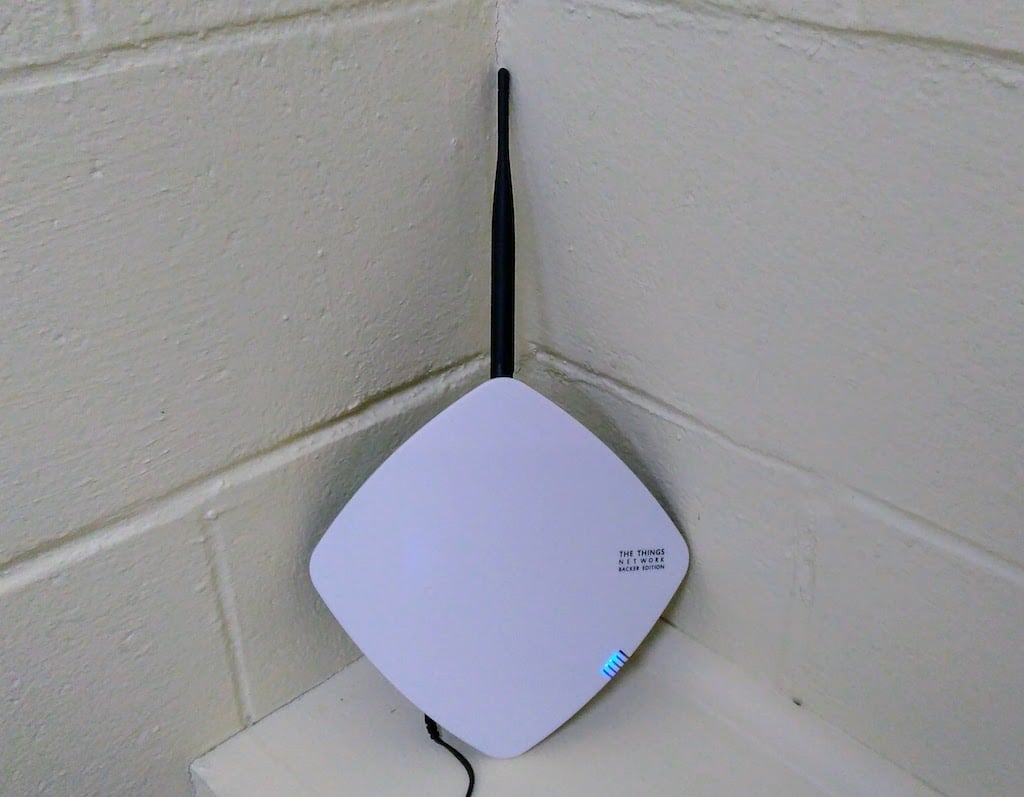
Next is a prototypical sensor box called The Things Node that can be used for testing and development. It’s about the size of an Altoids tin, contains temperature, light and motion sensors as well as a multi-coloured LED and a button, and operates on 3 AAA batteries. These, like other sensors that speak LoRaWAN, can be placed anywhere and everywhere, and can sense and forward all manner of things to a nearby Gateway:
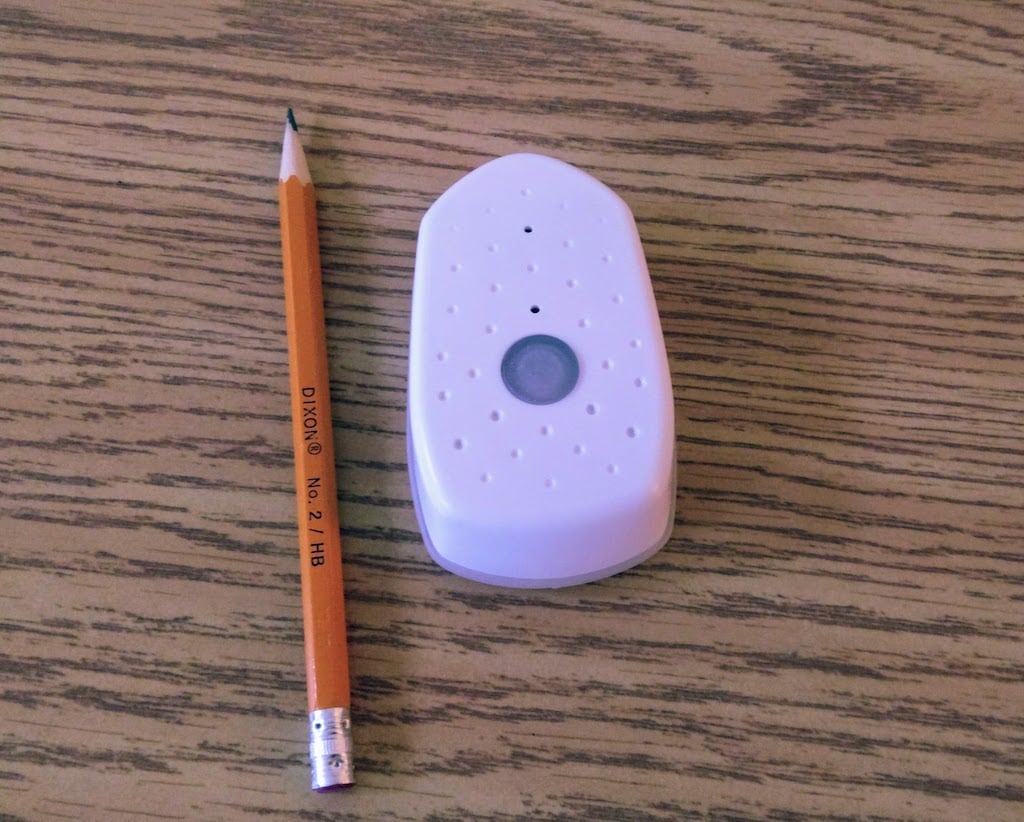
There’s a relatively simple process of activating The Things Gateway that involves getting it set with network connectivity (wireless or hardwired via Ethernet) and getting it registered with The Things Network’s routers. I called my gateway charlottetown-1, and here’s what it looks like in the Things Network console:

With the gateway in place, I turned to setting up The Things Node. At heart this is a SparkFun AVR inside a waterproof case, and the setup process involves getting an Arduino environment set up on a computer, connecting the computer to the Node by USB cable, and grabbing its unique ID number, called the EUI. Not the simplest procedure, but it’s well-documented.
Once the EUI is obtained, The Things Network console allows you to create an “Application,” and then to attached one or more “Devices” to that Application.
I set up an Application called charlottetown-thingsnodes that looks like this in the console:

Next I added a Device, for my Things Node, to this application, and called it charlottetown-thingsnode-1:
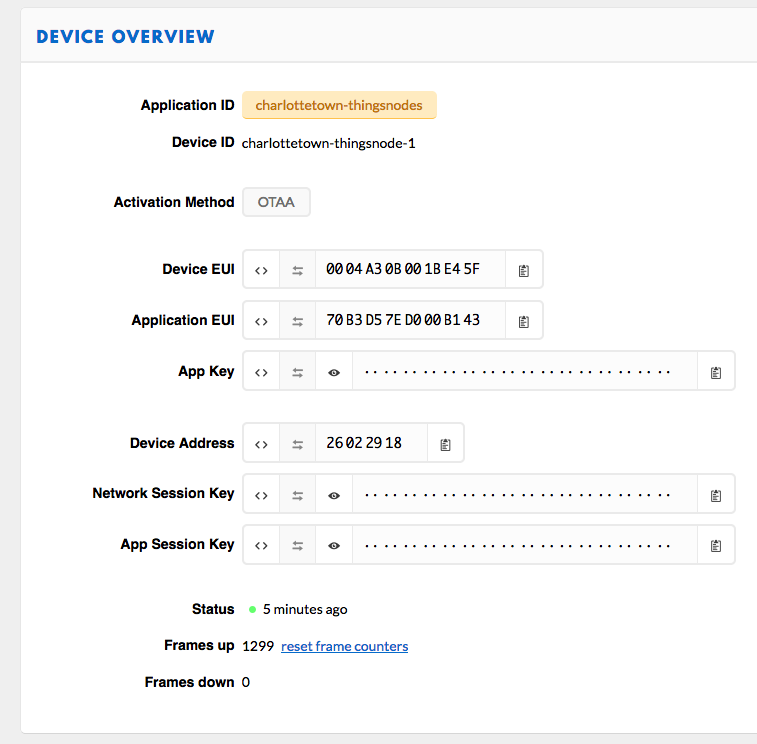
Finally, I uploaded a sample Arduino sketch to the Things Node that set it up to transmit temperature, light, and battery level readings every minute, and button-press and motion events as they happened.
Once I’d done all this, data started to flow from The Things Node, via The Things Gateway, over the Internet to The Things Network, where I could see it on my console:
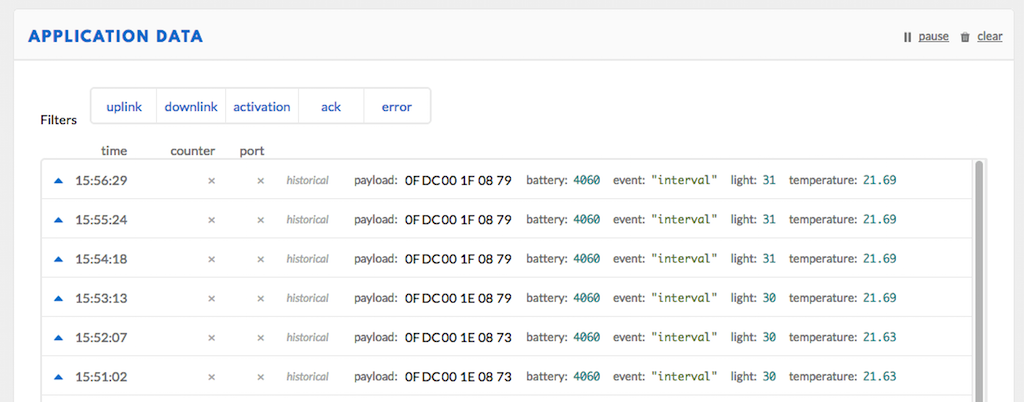
You can see that at 3:59 p.m. this afternoon the temperature in my office was 21.69ºC, the light level was 31, and the battery level was 4060.
The Things Network doesn’t actually do anything with the data at this point; for that, Integrations are required. These are third-party services that use The Things Network’s API to allow you to visualize, analyze or otherwise act on the sensor data you’re gathering.
One of these integrations is with IFTTT (née If This Then That), and while it’s a little cumbersome to set up (as the documentation is out of date), I eventually got it working, with this setup:
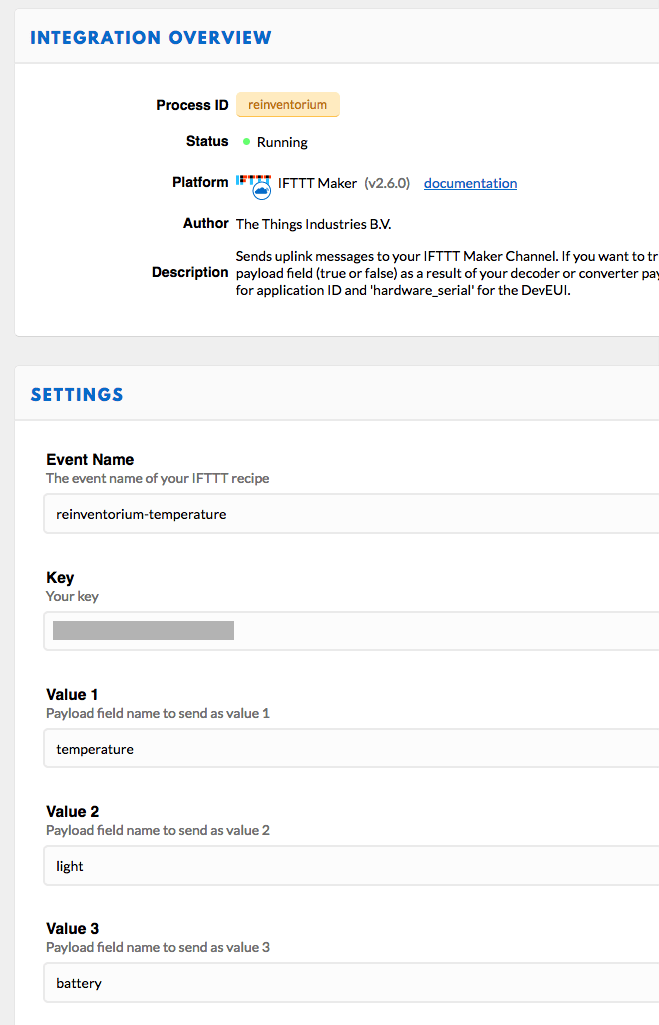
The keys to getting it working were understanding that on the IFTTT end the “this” you need to configure is now called “Webhooks” (it used to be called “Maker”), and that the “Key” value you need to plug into the Integration settings on The Things Network is the string that comes after “/use/” in the URL for the Webhook setup (the part I’ve redacted here):

The IFTTT “Applet” I setup takes data from The Things Network Integration via Webhook, and adds the three values it receives to a Google Sheets spreadsheet:
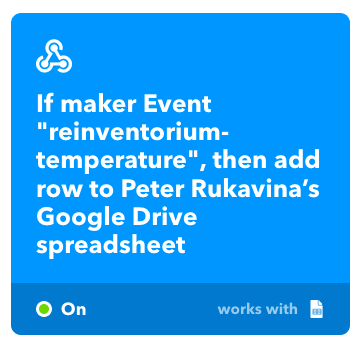
And that’s exactly what started to happen; here’s a shot of the Google Sheet:
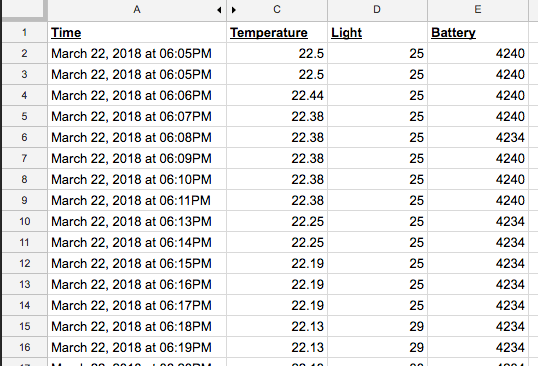
Here’s a chart of those values for the last day:
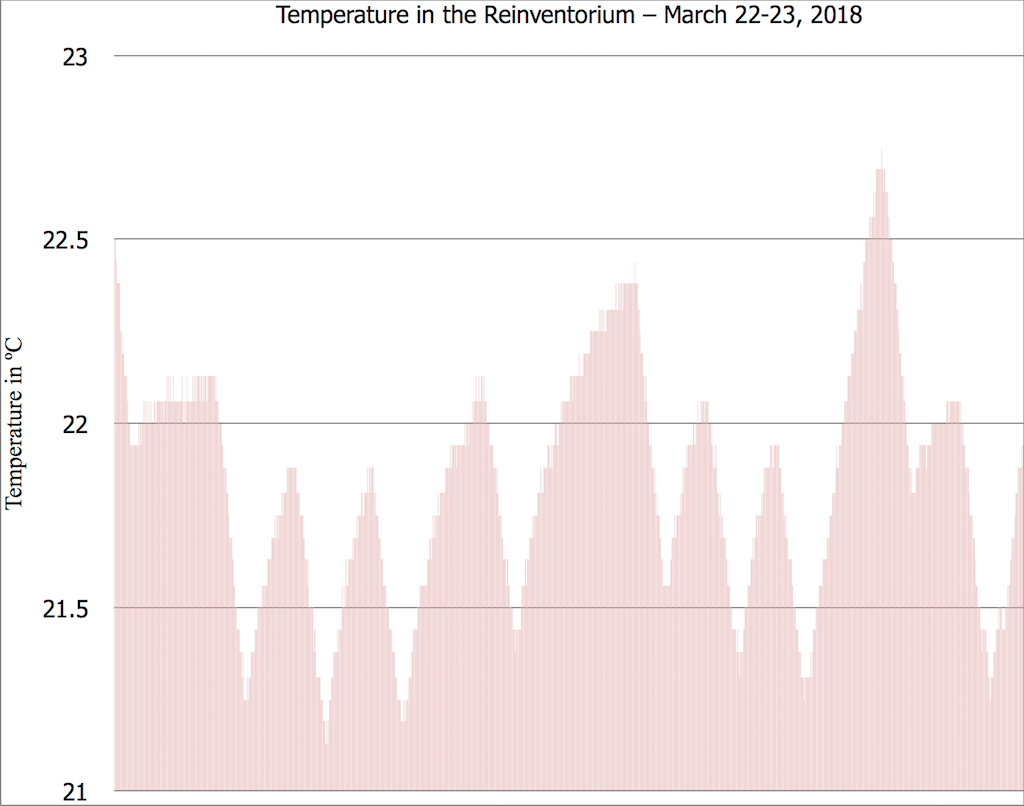
There’s relatively little variation in the temperature in the office, it seems: it ranges from a low of 21.13ºC to a high of 22.75ºC, a range of only 1.62ºC. I suspect this has something to do with the fact that the new office here, in the basement of the St. Paul’s Church Parish Hall, is heated by the district heating system, and that it’s tightly regulated.
Ultimately, of course, it doesn’t make sense to use all this gear just to measure the temperature in my office. But once I get the gateway centrally mounted somewhere high in Charlottetown, thousands of sensors over a large swath of the city, will be able to send data through it. That’s next!
One of the amazing/creepy features of the Amazon Echo is that you can opt-in to allowing other Echo users to “drop in” on your Echo, and this establishes an instant audio connection between the two of you, with no need to answer or acknowledge. It’s like leaving your front door open, and dispensing with the niceties of the need to knock.
Today is a snow day, and Oliver is home from school. I need to work. Catherine needs to work. And Oliver is averse to coming to the office or studio with either of us.
Given my new office’s proximity to the house–directly across the street, and 15 seconds away if I’m running–we decided to try an experiment today, where we leave the “drop in” connection between the Echo in my office and the Echo in our living room open. So, in a sense, Oliver and I are “in the same room,” albeit separated by a city street.
Oliver’s 17 years old, and he doesn’t need constant supervision: he’s pretty independent and self-contained as regards most aspects of life. But because someone could knock on the door, or Ethan could start barking at a squirrel, or the toilet could overflow, he needs access to supervision, and that’s what I’m here for, across the street.
We’ll see how it goes.
I spend a good portion of my working life, as all coders do, dealing with edge cases, those remote, seldom-seen corners of systems that confound original expectations. Discussion about edge cases often starts with “I never imagined that…”
I suspect that my new work-home proximity is going to drive Google Maps’ timeline feature bonkers: it’s an edge case, where the proximity falls well within the margin of geolocation-determining error.

I love everything about this video. The song. The choreography. The cinematography. The performance. Everything.
If I could dance like that I would be so happy.
For all the corporate merging and rebranding and offshoring that’s happened to what we now know as Bell Aliant, there are vestiges of Island Tel that show up from time to time, offering the kind of warm, neighbourly service we used to take for granted. Today was one of those days, as Installer Steve was on site here at the St. Paul’s Anglican Parish Hall (Reinventorium 2.0) to move the fiber connection from The Guild (I learned, by eavesdropping, that these are called the “F” and “T” ends, respectively, presumably for “From” and “To”).
Steve was every inch an Island Tel employee, literally and figuratively, and he got me up and running with flexibility, good humour, and technical acumen.
By early afternoon I was in business, with 142 Mbps down and 155 Mbps up when connected by 5 GHz wifi:
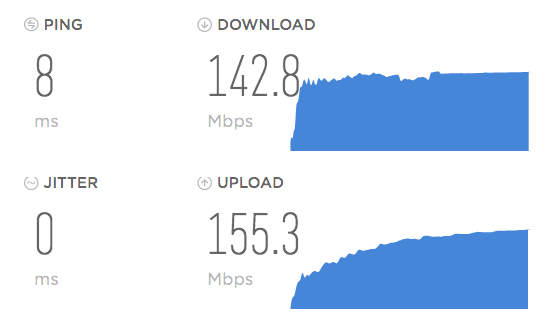
And a dizzying 307 Mbps down and 153 Mbps up when wired directly into the Actiontec router:
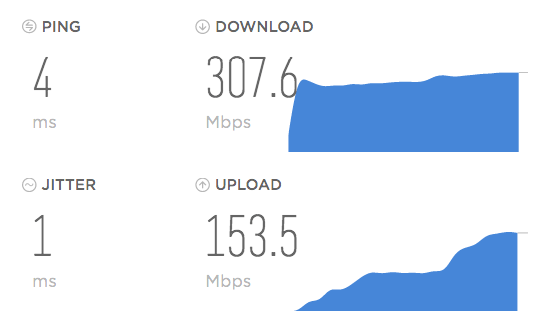
Twenty-four years ago I created my first website wired to the Internet via a 14.4 kbps bare copper connection to PEINet with a modem on either end; if my calculations are correct, that means my Internet speed is now about 21,000 times faster than it was then.
The move isn’t quite complete yet: there’s still the type drawer to come, and a table, and some shelves. And the bits and bobs I took off the printing press. But I’ve got until the end of the month to do that, so I’m going to take a break from moving-stress, get some work done, and enjoy tomorrow’s snow storm.
The team from McQuaid’s came through yet again, and the 103 year old Golding Jobber № 8 has a new basement to call home.
If you ever need something impossibly heavy moved in Charlottetown, I wholeheartedly recommend them.
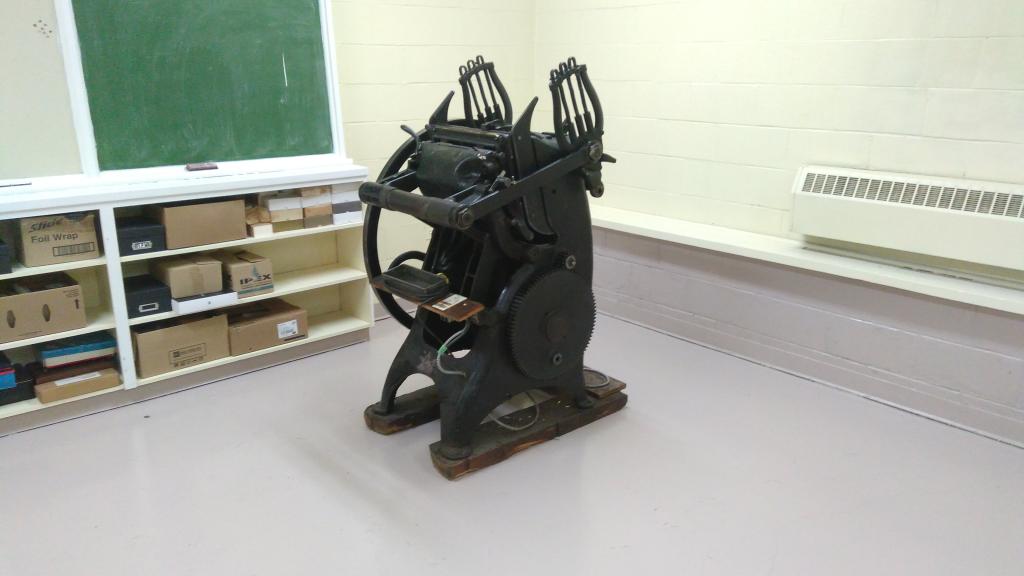
I managed to get the digital side of the Reinventorium moved today, with the generous help of my friend Ray, who popped over with his station wagon at exactly the right time.
No bandwidth yet—the Bell Aliant installer is booked for tomorrow. But my gear is in place, ready and waiting for it.
But before that, the printing press gets moved: I’m meeting the team from McQuaid’s at 8:00 a.m. at The Guild.
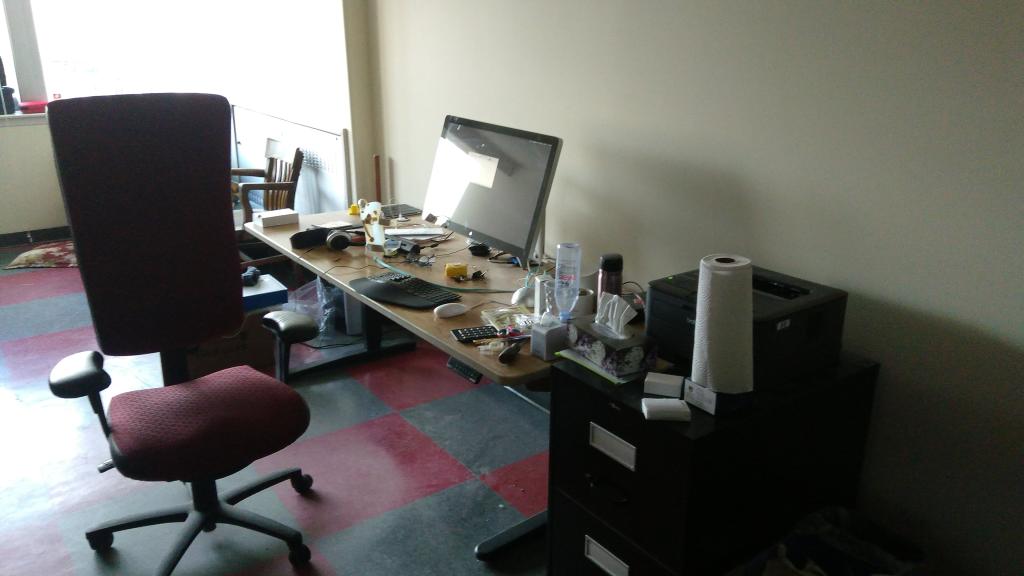 ,
, 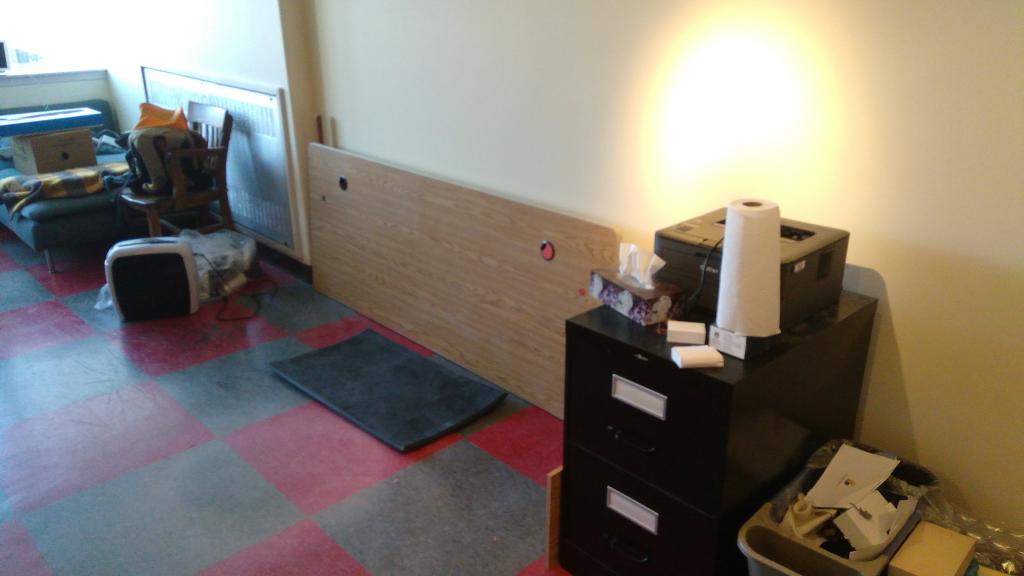 ,
,  ,
, 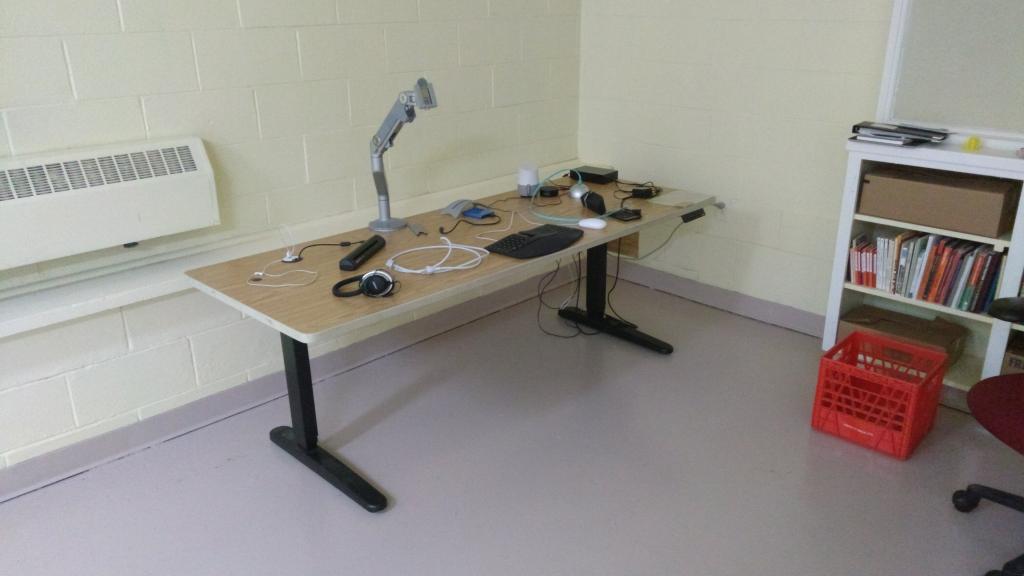 ,
, 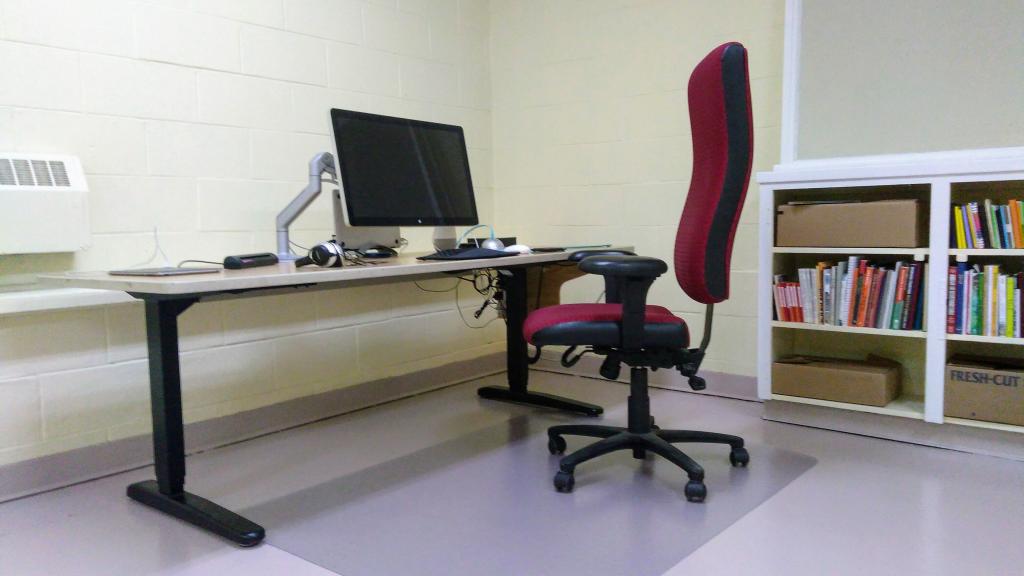
 I am
I am